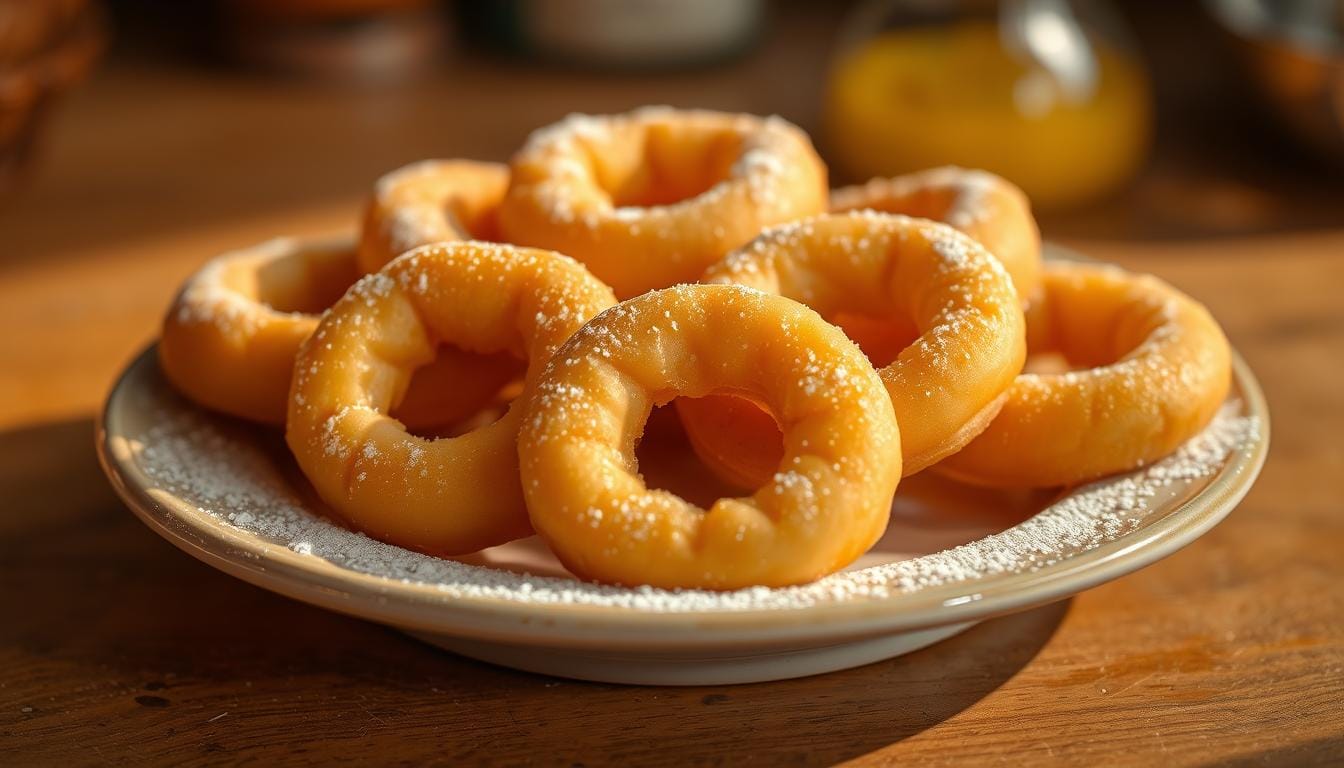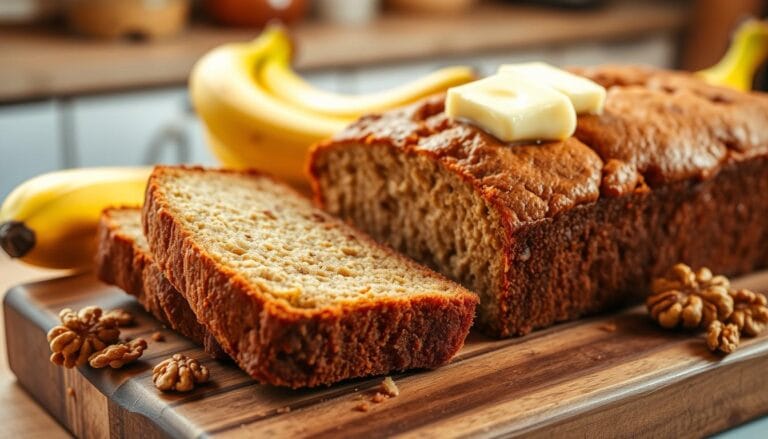Doughnuts: The 10 Best Flavors You Can Make at Home
Imagine biting into a warm, golden treat that’s crispy on the outside and soft on the inside. This is the magic of traditional North African doughnuts, a beloved snack that has been enjoyed for generations. Made with simple ingredients like 4 cups of white flour, 2 teaspoons of dry yeast, and a touch of sugar, these doughnuts are a testament to the beauty of authentic cuisine.
What sets these doughnuts apart is their spongy texture and rich flavor, achieved through a time-honored process. Unlike commercial versions, they are fried to perfection in vegetable oil, creating a delightful contrast between the crisp exterior and tender interior. This recipe is more than just food; it’s a piece of cultural heritage.
Rooted in Sephardic and North African traditions, these doughnuts, known as Sfenj, are a symbol of community and celebration. Whether enjoyed at home or shared with loved ones, they bring people together. In this article, we’ll guide you through every step, from mixing the dough to serving suggestions, so you can recreate this timeless treat in your own kitchen.
Table of Contents
Introduction to Traditional North African Doughnuts
Discover the story behind a snack that has been cherished for centuries in North Africa. Known as Sfenj, this treat is more than just food—it’s a symbol of heritage and community. Rooted in Sephardic traditions, it has been a staple in celebrations and daily life across Morocco, Algeria, and Libya.
Discovering the Rich Heritage
Sfenj holds a special place in North African culture. Its origins trace back to Jewish communities, where it was often served during holidays and gatherings. The process of making it has been passed down through generations, preserving its authenticity. This dessert is a testament to the region’s history and the importance of shared traditions.
In Morocco, Sfenj is commonly enjoyed with mint tea, creating a perfect balance of flavors. In Algeria, it’s often paired with honey or sugar for added sweetness. These variations highlight the adaptability of the recipe while staying true to its roots.
Embracing Simple Ingredients for Authentic Flavor
What makes Sfenj unique is its simplicity. The dough is made with basic ingredients like flour, yeast, and sugar. These elements come together to create a texture that’s crispy on the outside and soft on the inside. The use of vegetable oil for frying ensures a light and airy result.
By focusing on quality ingredients, you can recreate the authentic taste of this beloved snack. Whether you’re making it at home or sharing it with others, Sfenj offers a delicious way to connect with North African culture.
Essential Ingredients and Their Roles
Every great recipe starts with the right ingredients, and this one is no exception. The magic of these traditional treats lies in the careful selection and balance of each component. Let’s break down the key ingredients and their roles in creating the perfect doughnut.

White Flour, Yeast, and Sugar: The Foundation
At the heart of this recipe are 4 cups of white flour, 2 teaspoons of dry yeast, and ½ teaspoon of sugar. These ingredients form the base of the dough, providing structure and texture. The flour acts as the backbone, while the yeast and sugar work together to create a light, airy consistency.
Yeast is the star here. It ferments the dough, producing carbon dioxide that makes it rise. This process gives the doughnut its signature spongy texture. Sugar not only adds a hint of sweetness but also feeds the yeast, speeding up fermentation.
Vegetable Oil and Water: Key to the Perfect Dough
For frying, vegetable oil is essential. It ensures even cooking and a golden, crispy exterior. The oil’s high smoke point makes it ideal for maintaining the right temperature during frying.
Water, on the other hand, binds the ingredients together. It hydrates the flour, allowing the dough to form. The right amount of water ensures the dough is neither too sticky nor too dry, making it easy to handle.
“The balance of ingredients is what makes this recipe truly special. Each one plays a crucial role in achieving the perfect texture and flavor.”
| Ingredient | Role |
|---|---|
| White Flour | Provides structure and texture |
| Yeast | Ferments the dough for a spongy texture |
| Sugar | Feeds the yeast and adds sweetness |
| Vegetable Oil | Ensures even frying and a crispy exterior |
| Water | Binds ingredients and hydrates the dough |
By understanding the role of each ingredient, you can master this recipe and create doughnuts that are crispy on the outside and soft on the inside. Precision in measurements and quality ingredients are the keys to success.
Authentic Doughnuts (nord-africa) Recipe Techniques
Crafting the perfect doughnut requires precision and patience, especially when following traditional methods. From mixing the dough to frying it to perfection, each step plays a crucial role in achieving the ideal texture and flavor. Let’s dive into the techniques that make this treat a favorite in many households.

Mixing and Fermenting the Dough
Start by combining 4 cups of white flour, 2 teaspoons of dry yeast, and a pinch of sugar in a large bowl. Gradually add warm water while mixing until the dough becomes sticky but manageable. Knead the dough for about 10 minutes until it’s smooth and elastic.
Cover the bowl with a damp cloth and let the dough ferment for 1-2 hours in a warm place. The yeast will work its magic, making the dough rise and become airy. To check if it’s ready, gently tap the dough—it should spring back slightly.
Mastering the Frying Process
Heat vegetable oil in a deep pan to 360°F (182°C). Use a wooden skewer to test the oil’s temperature—if bubbles form around it, the oil is ready. Shape the dough into small balls or rings and carefully place them into the hot oil.
Fry the doughnuts for about 2-3 minutes on each side until they turn golden brown. Flip them gently to ensure even cooking. Once done, transfer them to a plate lined with paper towels to drain excess oil.
“The key to perfect frying is maintaining consistent heat and timing. Too hot, and the doughnuts burn; too cool, and they absorb too much oil.”
| Step | Tool | Time |
|---|---|---|
| Mixing | Bowl, spoon | 10 minutes |
| Fermenting | Damp cloth | 1-2 hours |
| Frying | Pan, wooden skewer | 2-3 minutes per side |
By following these steps, you can create doughnuts that are crispy on the outside and soft on the inside. Experiment with shapes and sizes, but always maintain consistency in your technique for the best results.
Variations and Twists in Doughnut Making
Transform a classic recipe into something extraordinary with creative twists and spices. By adding unique flavors and experimenting with coatings, you can personalize this beloved snack while staying true to its roots. Let’s explore how simple changes can bring new life to a traditional treat.
Incorporating Spices and Alternative Coatings
Spices like cardamom or Ras El Hanout can elevate the flavor profile of your doughnuts. These additions bring warmth and depth, making each bite a delightful experience. To incorporate spices, mix them into the dough or sprinkle them on top after frying.
Adjusting the sugar mixture is another way to customize your recipe. Try using caster sugar for a finer texture or icing sugar for a sweeter finish. For a healthier twist, reduce the sugar and add a drizzle of honey or syrup instead.
- Shaping Variations: Experiment with shapes like twists or balls to create different textures and appearances.
- Coatings: From dry sugar dusting to honey drizzles, coatings add a personal touch to your doughnuts.
- Cultural Influences: Draw inspiration from North African and diaspora recipes to celebrate diverse culinary techniques.
“The beauty of this recipe lies in its adaptability. Whether you add spices or try new coatings, each variation reflects your creativity.”
By embracing these adaptations, you can make this snack uniquely yours. Whether you’re shaping the dough into twists or experimenting with coatings, the process is as fun as the result. Stay true to traditional methods while adding your personal flair.
Serving Suggestions and Enjoying Your Creation
The true joy of these golden treats lies in how you serve and enjoy them. Freshly fried and slightly warm, they offer the perfect balance of crispiness and softness. Pairing them with the right beverages and toppings can elevate your experience.
Pairing with Beverages and Sweet Additions
For a traditional touch, serve your doughnuts with a cup of mint tea. The refreshing flavor complements the sweetness of the dough. Coffee or a glass of milk also make excellent pairings, enhancing the richness of this snack.
Add a drizzle of honey or a dusting of cinnamon sugar for extra sweetness. These toppings not only enhance the flavor but also add a delightful texture. For a festive twist, try a chocolate drizzle or crushed nuts.
“The right pairing can transform a simple treat into a memorable experience. Experiment with flavors to find your perfect match.”
When plating, arrange the doughnuts on a decorative tray or plate. Garnish with fresh mint leaves or a sprinkle of powdered sugar for visual appeal. This attention to detail makes your creation even more inviting.
Whether you’re enjoying them at home or sharing with friends, these serving suggestions honor the recipe’s heritage. Each bite becomes a celebration of flavor and tradition.
Conclusion
Bringing centuries-old traditions into your kitchen is easier than you think. This recipe showcases the beauty of simple ingredients like sugar and yeast, transforming them into a treat that’s crispy on the outside and soft on the inside. Mastering the process of fermentation and frying ensures authentic results every time.
Feel free to experiment with variations, adding a drizzle of honey or adjusting the spices to suit your taste. This dish is more than just food—it’s a connection to a rich cultural heritage that spans hundreds of years.
Try this recipe at home and share it with loved ones. Whether you’re honoring tradition or adding your own twist, this treat is sure to bring joy to your table.







